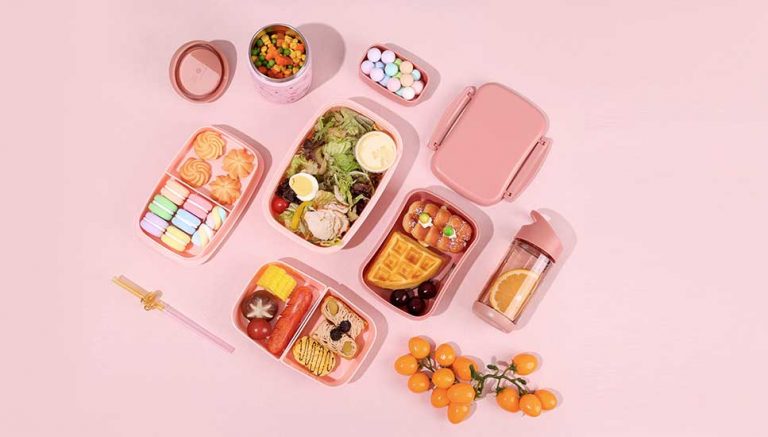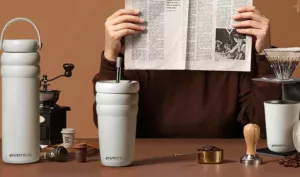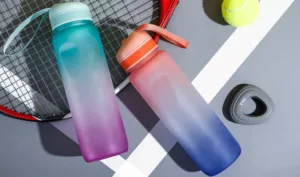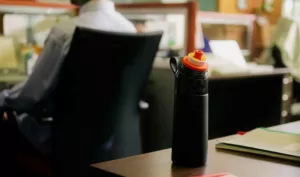In the post-pandemic era, “taking care of our own health” will always be a part of our lifestyle. Since the pandemic, our eating habits have also changed, with more emphasis on fruit and vegetables, and people are more likely to bring their own meals to the office, studio, school, and in the car. Lunch box products are becoming more and more popular in the market, but of the wide variety of lunch box types on the market, how do we choose the right lunch box supplier?
Types Of Lunch Box
There is a wide variety of lunch boxes on the market, including plastic lunch boxes, stainless steel lunch boxes, glass lunch boxes, silicone lunch boxes, and electric lunch boxes… Read on to find out the characteristics of different lunch boxes made of different materials.
Plastic Lunch Box – Microwave safe
Plastic lunch boxes are commonly made of food-grade PP, ABS, and Tritan. Lightweight, easy to carry, and heat. Easy access to hot food in the microwave.
Stainless Steel Lunch Box – Safe and durable
304 stainless steel is one of the most commonly used food contact materials, good corrosion resistance, safe ingredients, very suitable for holding food. Some containers can also keep food hot or cold after being vacuumed. The stainless steel lunch box is also a good choice as a fresh-keeping container in the refrigerator. Meet cooking requirements, but can not be placed in the microwave.
High borosilicate glass lunch Box – high/low-temperature resistance
High borosilicate Pyrex lunch box has a very low coefficient of thermal expansion, that is, is not sensitive to temperature, as ordinary glass or toughened glass thermal expansion and contraction degree is much smaller, so it has high-temperature resistance, high thermal stability, temperature difference change, and high borosilicate Pyrex preservation lunch box can be used in the refrigerator, microwave oven, oven and dishwasher, and can even be heated on the open fire. But the weight is relatively large, and if not properly protected easily broken.
Silicone Lunch Box – Foldable
The silicone lunch box is portable and foldable, saving space. Fall resistant, suitable for baby use. The upper limit of the heating temperature is 180 ° C to 230 ° C. It is not recommended to freeze or store food with a lot of oil and seasoning.
Wheat Straw Lunch Box – Durable
Environmental protection, no heavy metals, degradable, durable, and fall resistant.
Ceramic Lunch Box – Resistant to high temperature
Preferred non-colored glaze coated, and the inner wall of the ceramic is safe and healthy for the human body. In addition to the safety of the material, there is a relatively good insulation effect, coupled with the smooth surface of the inner wall of the ceramic lunch box, bacteria and dirt are not easy to breed in the cup wall easy to clean.
Wooden Lunch Box – Japanese cuisine
The wooden lunch box is polished and painted by hand, the appearance is simple and light. But it is not good to clean, because it can not be disinfected at high temperatures, or boiling water immersion, so be careful when cleaning; it’s not airtight, and it’s not good for soups. Japanese-style dishes or salads are better.
Electric lunch box
The basis of the insulated lunch box is made of a heating sheet made of heating material, connected by an electric connection wire new portable lunch box. The food to be eaten will be put into the lunch box, the top cover will be tightly plugged into the power supply, the heating indicator will be on, and it is expected to be eaten within half an hour. If you do not eat it for a short time, you can continue to switch on the power supply. The food in the electric lunch box can keep hot all the time. In cold areas, the heating time will be slightly extended. Divided into the household or car use, the voltage is different in different countries.
There are also aluminum lunch boxes, light and small, carrying, not easy to rust, in addition to strong plasticity, which can avoid knocking on the body injury.
What Materials Are Used To Make Lunch Boxes?
We have been focusing on the production of lunch boxes and water bottle supplies. Whether you are a wholesaler or an individual consumer, we have different lunch box styles for you to choose from, among which stainless steel is one of the best raw materials, and can be bent into any shape you can imagine. Let’s learn about its production process.
The Production Method and Process of Lunch Box
You can create a stainless-steel object in two ways. One way is to make it from raw pieces of steel that are rolled and joined together. The second way is pouring molten steel into a mold shaped like the final product. Debating on the better stainless steel production method all depends on what product you’re making and how you plan to use the process. The entire process revolves around the following functions of the procedure:
Melting and Casting
Forming
Heat Treatment
Work Hardening
Cutting or Machining
Finishing
Find Wholesale Lunch Box Supplier Directly – Everichhydro
We hope that this article has helped. So if you’re looking for the best lunch box, we’re glad Everichhydro could help. We offer types of drinkware including water bottles, tumblers & mugs, and beer & wine series. Aside from this, we also have types of kitchenware covering the coffee pots, food storage & lunch box, and small kitchen appliance. Our wholesale drinkware and kitchenware also come in different sizes and shapes.




